Around the world, there is reason to hope. Here are some examples of nations who have either controlled, or are starting to see huge regression of rates of COVID and hospitalisation.
The key is
-
They ALL have over 90% of their eligible population vaccinated.
-
They all test their populations and maintain excellent Contact Tracing, and have a population that abides by restrictions to people who test positive, or have symptoms.
Denmark –
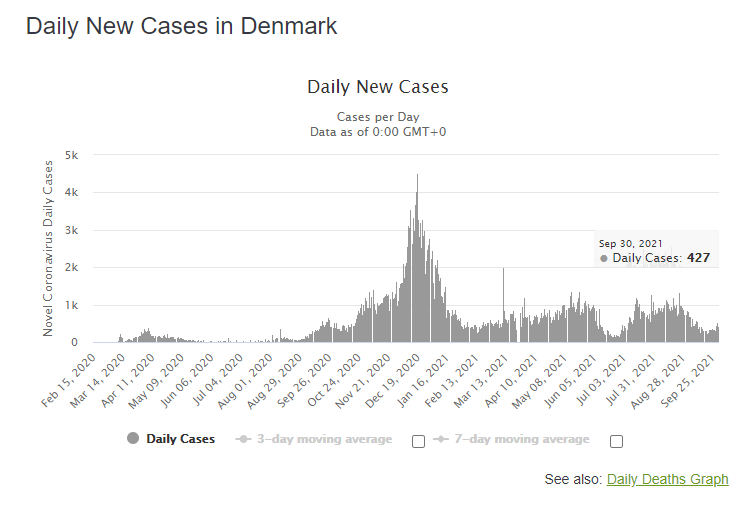
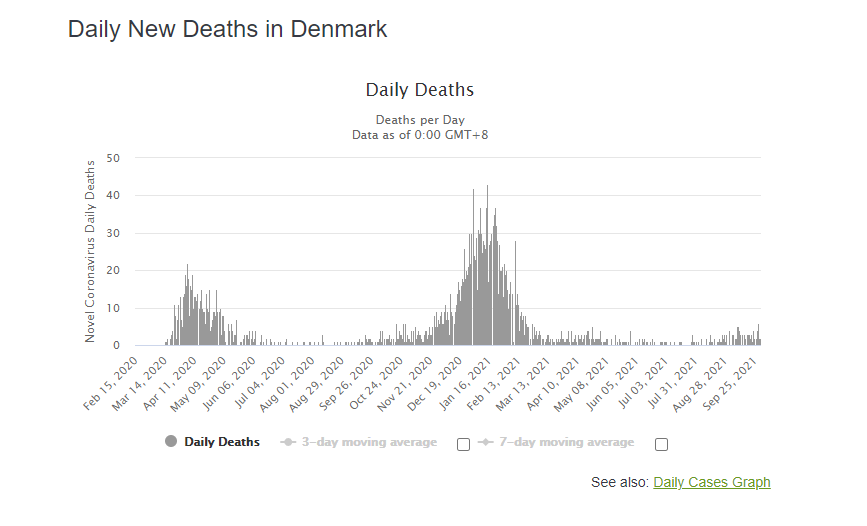
Israel
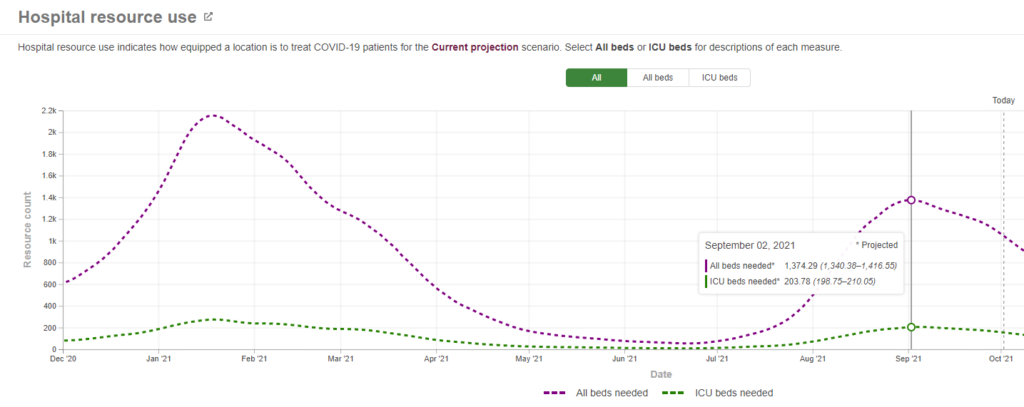
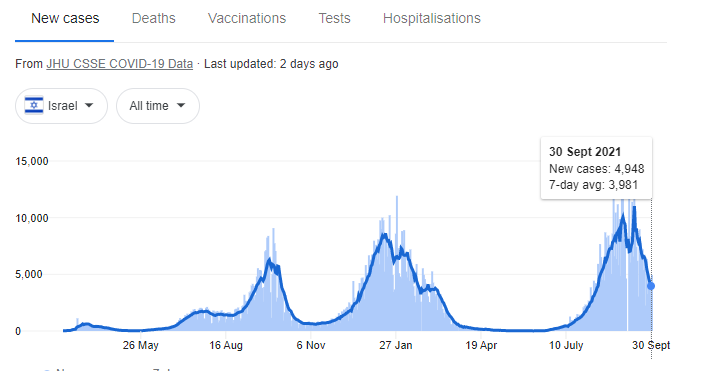
Portugal

The UK
The UK has had 82% of its population double vaccinated. Yet vaccination uptake has stagnated. Unfortunately, a lot of misinformation spreads there, similar to the US. Currently, they are 130-135 deaths per day. By comparison, that would be equivalent to Australia seeing 48 deaths per day, which is almost 5x higher than what we’re seeing on average here. It’s important to know that they have almost 15x more cases per day there. So a higher vaccination rate DOES work in reducing hospitalisations. But sadly, their hospitals are quite strained – with over double the ICU bed usage (adjusted for the UK’s larger population). They did also use a different vaccine – but one shown to have similar efficacy in reducing hospitalisation and severe death against the delta strain (in any case, we in Australia also used the AstraZeneca vaccine). This is why we need a HIGHER vaccination rate than 82%!
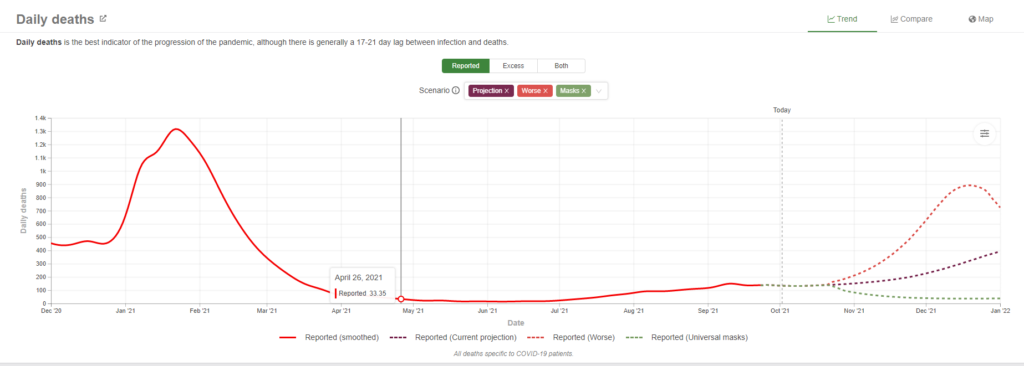
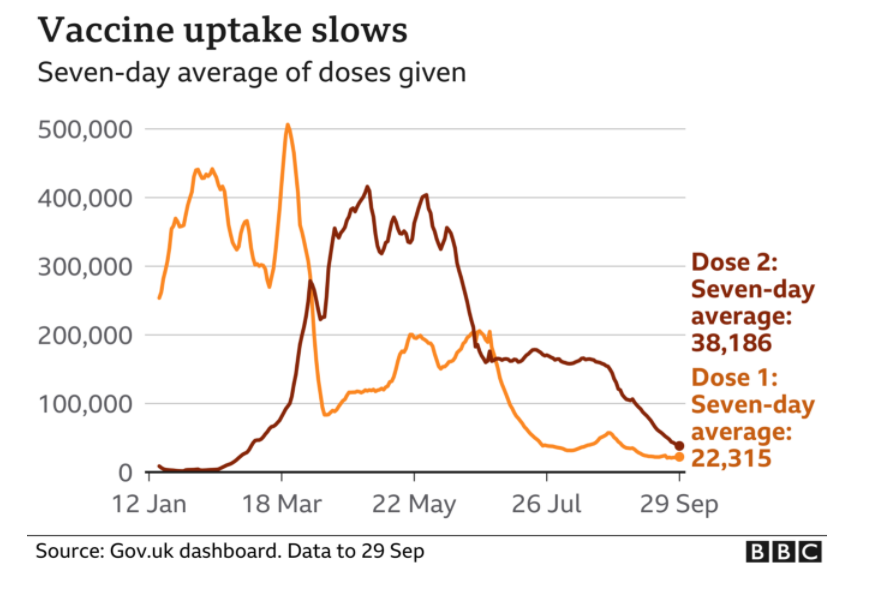
There is reason for alarm. And this is likely why cases, deaths, and hospital strain is not going down there. I have friends in healthcare there who are struggling to keep up. I hope this trend doesn’t continue.
Iceland
Iceland has controlled the delta Virus, without lockdowns, or restrictions of any kind, at any point. They did this through mass testing and effective and comprehensive contact tracing. I discuss this in detail, and how we can use rapid antigen test screening to mitigate this. At the very least though, targeted, regular rapid antigen tests, in addition to regular PCR testing for symptomatic or exposed populations may reduce the likelihood of COVID-19 outbreaks. And we NEED to emphasise this. I feel like in NSW, we’re losing focus of this as Lockdown fatigue affects us all. Find out more on Iceland’s contact tracing strategy too.
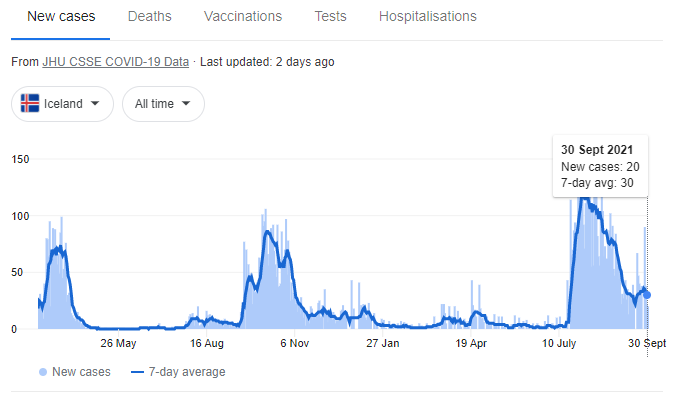
Iceland is a great example of how mass testing and contact tracing alone works! But with a vaccination rate of >95% likely responsible for reduction in transmission, a shining example of how high vaccination helps too.


I know myself just how draining that is. And lifestyle change seemed so daunting. I mean the very phrase insinuates huge change.
But then one little change fixed everything.Instead of trying to fix my diet, or change my habits overnight, I decided to fix my mindset.
But I didn’t, and still don’t use any willpower to maintain this at all.
And to be honest… it wasn’t really that hard at all.

I’m not trying to sell you shit.
So what did I do?
1) I told myself it would take time.
2) I let myself be human, and cheat or fail every now n then. Well, regularly, to be honest.
3) I took a step back and changed how I looked at food.
4) I challenged the thought processes that made me keep wanting to eat, while I was eating. I challenged these regularly. I rewarded myself regularly with congratulations and self-applause when I made the right choice. If I couldn’t help it, I’d make an excuse, knowing that I was forming neural networks that would solidify in the long run.
5) I SLOWLY – we’re talking 1 pizza slice less per month – reduced my portion sizes.
6) I ATE WHATEVER I WANTED – and let myself be human, knowing, that by reducing my portion sizes slowly over time, my stomach would get smaller and my brain would form neural pathways would make NEW thought processes that would become my habit.
The most important part of this process is STEP NUMBER 3! Repeating step 3 for JUST THREE WEEKS HAS MEANT…
7) I didn’t have to do anything else. I don’t have to do anything else. Ever. Neuoroplasticity has ensured that I never
have to try to diet or lose weight, EVER.
That’s it.
But keep reading to understand WHY step 3 is important, and how you can and should be doing this.
Check out my 40 page book which summarises all of this and cites everything
I hope it can help. And email me if you ever wanna talk. Keep reading on and I hope this helps.
Everyone talks about how they can’t stay on a diet and how they can’t find the time to do exercise… They talk about how hard it is to make changes in their life and how they just don’t have the willpower or ability to be healthier people.
But even while on 50mg of prednisone, a corticosteroid (which increases your appetite, screw around with your hormones and energy metabolism, and eat away at muscles) and even while I was still getting some chemotherapy which makes me anaemic for a one or two weeks every month, I didn’t find it hard at all.
All I did to become a healthier person was change my MINDSET.
I made healthy habits and eating less – a habit. The path of least resistance.
Automatic. And you can too.
Doctors all tell us that weight loss requires a lifestyle change, rather than drastic, quick-fix 12-day-detox/Biggest Loser boot camp solutions. And they’re right. You should look to lose weight AND keep it off. It’ll help you with heart problems, lower your chances of diabetes, reduces your risk of cancer and also – a healthy diet can make you feel better, more energetic than ever before.
But the words “lifestyle change” imply that it’s hard, that it requires constant effort and struggle to do, and that’s a big reason why people aren’t willing to make that change.
Eating the right foods, and getting some exercise on a continuous basis IS vital to weight loss. But what’s even more important is if you can maintain that way of living.
In hthis picture, I was sitting at around 106-107kg. I was trying everything to get fit and lose weight. I started juicing, cutting carbs out of my diet and went out, trying to run, get back into my old sprint training and back into the weights. And that was working – as it would for anyone – for a few weeks at a time.

Before: 107kg
But with my low immunity putting me into hospital with infections every few months, with my treatments lowering my bloodcounts, I kept getting sent back to where I began from over and over again… and it was frustrating as hell.
I yoyo dieted. Like crazy. I calorie counted. Stopped carbs. Intermittent fasted. Got into calorie deficits.
But dieting is hard. Forcing yourself to not eat is unnatural and really hard to do consistently.
I wanted to lose weight and become as fit as I was before cancer… I wanted to see results… but they just weren’t coming.
But after a while of this, I took a step back and saw that I was going through a cycle over and over again. It’s the same cycle a lot of yoyo/fad dieters go through.
I wanted results and I wanted them NOW. But they weren’t coming.
You don’t need huge “willpower” to do it. All it takes are a few small changes in how you view things.

But I’d lost nearly 20kg. It looks like a lot, but really, it was 1kg/week.
The only time I gained weight again after that first burst of weight loss was 5 years ago, when I got a third cancer in my ribs, was in hospital, and when I thought I’d need chemo again. I got back to my normal weight 6 months after that. Without trying.
So how exactly did I get there?
And how can you do this too?
1) I told myself it would take time.
2) I took a step back and changed how I looked at food.
3) I challenged the thought processes that made me keep wanting to eat, while I was eating. I challenged these regularly. I rewarded myself regularly with congratulations and self-applause when I made the right choice. If I couldn’t help it, I’d make an excuse, knowing that I was forming neural networks that would solidify in the long run.
4) I SLOWLY – we’re talking 1 pizza slice less per month – reduced my portion sizes.
5) I ATE WHATEVER THE DUCK I WANTED – and let myself be human, knowing, that by reducing my portion sizes slowly over time, my stomach would get smaller and my brain would form neural pathways would make NEW thought processes that would become my habit.
6) I didn’t have to do anything else. I don’t have to do anything else. Ever. Neuoroplasticity has ensured that I never
have to try to diet again.
In more detail and for the science, keep reading. If you’d like to read the whole science kinda thing, and check out the papers behind this – check out my 40 page book which summarises all of this (all free, lol, I should monetize this to grow it, but I’ve got no time and really would only monetize it to reach more people).
But yeah. I hope this helps. Email me if it does or if you wanna talk anytime.
# 1 – I Told Myself that it Would Take Time
–> This is one of the most important realisations you’ve gotta make. No matter how much we want it to, results don’t come in a few days. But they do come.
The trick is to not only remind yourself of this – but to keep looking at the big picture, on your entire journey – as this will make maintaining changes easier to accomplish. Instead of falling down in a heap if you can’t resist that desert at a party, you’ll remind yourself that the amount of times you had been good, and that in the long run, you were on the right path.
The science only helped me further believe, hell, it made me KNOW I could do it. But I mean it only made sense… I was only beginning my journey to get healthy – I was starting from scratch. It would take time to get to where I wanted to go. It wouldn’t happen overnight.
But that wasn’t a bad thing. I mean, it’s simple statistics. If I did things generally right, over a long period of time, I’d get to where I wanted to be. And by looking at it this way, I wasn’t forcing myself into doing something I didn’t want to – I was ALLOWING MYSELF TO BE HUMAN. knew I wouldn’t give up, or worry, or hate myself if I had a few slip-ups on the way either.
That’s exactly how you should look at weight loss, or any goal for that matter. It’ll give you the best chance of getting there (and of staying happy on the way too).
#2 – I Took A Step Back, and Made SMALL Changes To How I LOOKED At Food
–> Instead of making huge, drastic changes to my diet, or instead of starving myself, I
- Took a step back, and
- Questioned my current habits, until I saw
- An alternative perspective, or way of looking at things, that would leave me healthiest
A self-distanced perspective is described as that of someone looking at themselves as if they’re a fly on the wall. In the short term, this stops you from reacting emotionally, it reduces blood flow to limbic centres – it makes you more logical – and in the long term, it stops you from ruminating, or lingering over, things you can’t control.
When you do take that step back, your medial pre-frontal cortex, which, when firing, is associated with feelings of negativity, fires less. It’s shown to increase the ability for depressed people to think more broadly, and fixate less. It’s shown to make you more objective – you’re more likely to understand, and be realistic about things like understanding your chances of winning the lottery by doing it. Older adults, demonstrate lower blood flow to emotional centres of the brain and because of this, are what we call wiser – more logical, less likely to react emotionally, and they’re also more likely to be happier too.
You’ll get the person most likely to motivate you on your side –
YOU.
Motivation works best when it’ comes FROM YOU!
3) I learned about how neuroplasticity worked, and made it MY HABIT to look at food in the most healthy way.
This is the most important step.
Key to this whole process’s success, is reinforcing this. Walking through that thought process over and over.
Neuroplasticity, can basically be broken down to this principle. “Neurons that fire together, wire together.”
Your brain sends signals in coordinated patterns. A thought is merely the combined, coordinated firing of a chain of connected neurons. The connection points are called synapses, junctions, into which pour ‘neurotransmitters’. Neurotransmitters attach to receptors and basically enable electrical signals to pass between two neurons.
The more these synapses fire, or the more these junctions have neurotransmitters ooze into them, a process called “long term potentiation” occurs. Neurons become more and more likely to fire together, because an increased exposure to neurotransmitters leads to less neurotransmitter being required to mount the same response next time (‘refiring’ lowers the threshold to allow a connection to fire), and also creates a larger impact when a signal is given.
Over time, a group of neurons firing together which underlie a movement, a habit, or a thought process, solidify into a cortical map. This video outlines this in easy to understand principles. If you’re keen – go watch it (remember, the reason why I outline all these things is so that YOU understand, and thence, can SEE how this process will work in you, making YOU more likely to succeed).
When you practice something, be it learning to shoot a basketball, a ditty on the piano, or to create a new habit, it’s hard to even coordinate an action at the beginning. But the more and more you do it, the easier it becomes. At a cellular level, this is because those synapses that create the desired effect – of you getting a shot in, playing the right notes, or remembering to put your keys in that one spot – as you’re trying to do them, become stronger than that of you missing, stuffing up or forgetting.
That’s how your learn.
That’s what neuroplasticity is.
Thinking takes effort. It was suggested that chess grandmasters burn up to 6000 calories per day while playing. Though a gross oversimplification with broad assumptions, it’s very much true.
Neuroplasticity is basically your brain making it easier for you to access a thought you use often. When thinking “Why am I eating this?” for a few weeks (and it only takes 3 – 6 weeks to develop firm neural links that are Harder to break than bad habits), it’ll become so easy it becomes automatic. You’ll find yourself asking yourself “Am I really enjoying that last bite?” and “Am I really valuing the extra $0.005 of rice I’ll throw away here, more than the hundreds of thousands I’ll spend facing coronary events in my 50s or 60s?” ALL THE TIME.
It becomes easier to fork out one less spoon, pick the healthier option, or just enjoy a few chips rather than scoffing down a packet, than it is to do the opposite. Doing the opposite won’t even make sense.
They key to making it through the 2 weeks?
Rewarding yourself, over and over, and allowing yourself to be human too!
Neuroplasticity is the foundation of learning, memory and habit formation.
And it works best when you give yourself a GOAL to accomplish, and get there by reaffirming BEHAVIOURS which eventually solidify into THOUGHT PROCESSES that become your habit.
That’s where reinforcement of the above ‘process’ of
1) Taking a step back and then
2) Breaking down your major obstacles into chunks that you can counter and follow
Is one that you need to practice.
Let’s use muscle memory as an example. Sure, it’s easy enough to visualise a goal of increasing your first serve percentage in tennis. But you have to serve over and over to create connections between your cerebellum and cerebrum (major parts of your brain that are responsible for coordinating movements), and solidify them as an automatic process.
Self rewarding is key to focusing the effects of neuroplasticity. When you pat yourself on the back, you release dopamine which solidifies neocortical maps as they form.
And as stated earlier, not only does self affirming, rewarding yourself when you get closer to your goal with a little “YES,” lead to dopamine firing which focuses neuroplastic map formation, the closer you get to a goal, the more dopamine you fire as you get there. Meaning it actually becomes easier and EASIER to maintain a habit the longer you do it.
It’s why, when you have focused and gotten a few good serves in, the next few become easier. The more and more you practice your serve, the higher and higher your serve percentage goes up.
When you combine this with you not being too hard on yourself… it creates an amazing feedback loop of you continuing to pump yourself up, pick yourself up when you need to, and you relishing as you grow and grow and grow.
So don’t feel too bad if you do eat a little bit more one meal. Because in the LONG run, as long as you make positive decisions, you have no way to go but become healthier and happier.
Neuroplasticity, self-rewarding, and goal setting is key to weight loss.
But what actual “hacks” can you use to get your mind on your side? That’s what the next section is about.
4) How to actually Hack your Stomach, and Your Brain on Food?
i) Reduce your Portion sizes. SLOWLY:
When trying to reduce how much I ate – I realised that, especially with foods I liked, I was just gulping down food down by the spoonful. But in truth… I wasn’t really taking the time to savour them. The first 5, 10, maybe 15 spoonfuls or bites were most enjoyable. The last few… even with my favourite foods, well, to be honest, I was really only trying to finish off what was left.
To change that I made small gradual reductions to my portion sizes. I started savouring my meals and once I realised I was full, I’d just leave it, put it in the fridge or throw it out, and next time take out less.
Over time… the portions got smaller and smaller. When going out… if I didn’t really feel like finishing off my plate, I’d just leave it and ask if anyone else wanted a few bites. I was brought up on the whole “Finish your plate, there are children in Africa who’d KILL to have what you’ve gotten!” sort of mentality… and it’s true. We waste tremendous amounts of food, and do need to respect it more.
But why was I destroying my veins, my health, my vitality to assuage this preconception, when I could instead just take out a few less spoons, order a medium (and in time, a small) meal instead of a large one, and pack away good meals for breakfast or lunch the next day, and feel better for it?
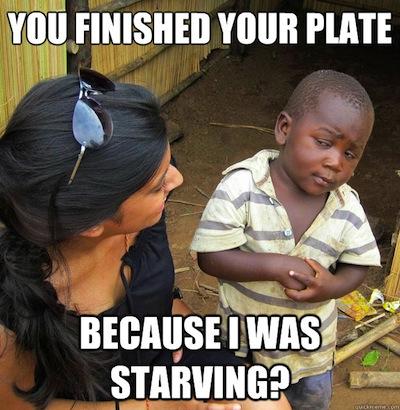
Your stomach usually has a capacity of 200mL, but can stretch to hold up to 1L in most humans, by relaxing smooth muscle cells which comprise most of its wall. Over time, however, if not stretched to larger limits, the stomach loses the number of smooth muscle cells, and pacemaker cells (those which cause coordinated digestive contractions), leading to lowered capacity to relax. Furthermore, levels of neurons which release nitrous oxide, which promotes relaxation of smooth muscles, also reduces in patients who have lost weight recently.
So over a period of a few weeks, slow, sustainable reduction in meal sizes will cause you to lose the ability to eat larger meals over time!
It’s interesting to note that even after a while of this kind of fasting, even after overconsuming, average stomach stretchability did not return back to normal levels, meaning you’ll have the ability to have the occasional splurge without starting back at square 1 again.
But key to all of this working is the neuroplasticity of your mind. It’s widely conceived that you need huge willpower to resist the temptation to continue eating. But the simple changes in the way you think about food described above is what ensures you’ll get to that stage where your stomach adapts.
Neuroplasticity is the brain’s ability to form new cortical maps – linkages between series of neurons – in response to various scenarios. ‘Neurons that fire together, wire together,” is the basic principle on which this idea is built – so reminding yourself that
- You like food, but hate that fatty, full feeling afterwards
- You like food, but often shovel in the last few bites just for the sake of it. And that
- You enjoy meals even more when you really take your time to savour the meal
for just a few days in a row, will start forming these cortical maps. In weeks, these cortical maps become so solidified and prolific – they become your automatic response. You won’t have to think these things anymore, you’ll already, subconsciously believe them. And though weeks of resisting temptation seems hard to do, because it
- Is coming from YOU telling yourself these things;
- Because your cortical maps are forming and becoming more and more solid over time, and
- Because you’ve got a long term goal, which causes more dopamine to be released each step you take towards it –
it’s actually quite easy to do. They’re subtle, small changes to how you view food, but combined, they make a HUGE difference. It’s the difference between going into a diet, hating life and having to force exert significant willpower to control yourself, and eating what you want, but slowly, and surely, changing your mindset, and letting your brain lose the weight for you.
Remember, thinking is HARD. We’re lazy, and we don’t wanna work, because your brain consumes oxygen. But if you understand HOW the brain works and learns (pretty much everything we do and get better at relies on this neuroplasticity), and you make changes that make your NORMAL thought process a HEALTHY one that DOESN’T REQUIRE willpower to do… Well being healthy BECOMES the lazy, easy thing to do.
And you know what? It worked. In January this year, I could eat a whole pizza, and I’d go up for second servings when lamb curry was made at home. Now… I can still do a half pizza… maybe more, but only when I feel like it. And I barely finish 3/4 of a plateful of rice and curry (I used to eat 1 – 1.5 lol). That small change in mindset resulted in a huge reduction in my calorie intake per day. And it’s the main reason why I’ve lost so much weight AND KEPT IT OFF without trying.
ii) Making Healthier Choices:
Me – I’m a foodie. I like trying different things, new cuisines. And I like variety in my day to day life. I also like my meat, hate salads on their own (chemo’s changed my taste a lot – I used to love the taste of lettuce… now it tastes like dirt at times) and I like eating carbs like bread or rice with meals. Who doesn’t really?
With these simple changes, I was able to eat all these things and still lose weight.
But I knew I could stand to benefit from eating generally healthy foods… so again, I took a step back, questioned my current habits, and made small changes to my mindset on food, which helped me eat more healthily too, without depriving myself of the pleasures of life.
Carbs… I did like them, but what I liked more was what I was eating with them.
So I changed the portions around, added more fillings or curries, whatever I was eating at the time and reduced the proportion of that to however many slices of bread or spoonfuls of rice I’d eat with them. Again, this happened over weeks, not instantly.
With salads, whose taste I couldn’t stand post chemo, I started drizzling, sometimes dumping tasty dressings based in oils (luckily regular olive oil is good for you), and added things like cottage cheese or olives to make them tastier.
Juicing, though it gets good vitamins and veggies/fruits into you, was too much of a hassle to do regularly, especially cleaning the damn things. So I started looking around for good fruit/vegetable juice mixes with no added sugar or preservatives and came across this brand, which uses pressure instead of preservatives, and doesn’t add sugar to the mix and saves me time too. There’s bound to be something similar in your location!
I liked variety in my diet, and that was good. So I picked cuisines to eat regularly that were easy to prepare, and tasted good and were still healthy for me – things like tacos or stir fries (which have good amounts of veggies, are easy to cook, low in carbs and have good, but not excessive amounts of meat) and I mastered them. They’re like a staple to me now. And I don’t hate eating unlike most people who diet – so I maintain this healthy lifestyle still, to this day.
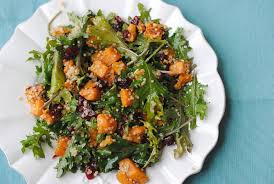
I couldn’t believe this came from CostCo either when I first tried it. But I highly recommend it – their Kale/Sweet Potato/Quinoa cous cous salad.
iii) Taking out the Junk Food
To be honest, I haven’t taken out all junk food. I probably eat junkfood once a week now, still. But I lost all that weight while eating junkfood every few days.
Still. Junk food is junk… food. How did I reduce the amount of crap I ate?
Well I mean I looked at them, from that step back, and asked why I used to have that crap so often… I mean they do taste good, and they are cheap and easy to prepare… But I hated that “fat”, “oily” feeling I had after eating a packet of chips, some chocolate or a burger or box of chicken from KFC.
I didn’t cut them out entirely, which many people do, instead I only got a few small bits and pieces from fast food places or fish n chip shops, every now and then, and had them alongside other, healthier stuff. KFC – I made sure I had that with these pre-made salads I found in CostCo which complimented it perfectly. With the chocolates, and chips, instead of gulping down a handful or packs of tim-tams at a time and then feeling bad afterwards, I shared them around with other people, or scabbed a few chips or bites from friends instead of buying a full pack and feeling like I had to devour it. Those small changes made me eat healthier (and also saved me money too – sorry guys). I still got to enjoy the taste. But I sidestepped feeling crap!
They are easier to cook, I guess, and many people just don’t have enough time to cook – but those meal suggestions I made above really help with that. Another thing that makes cooking easier for me is marinating meats and eating them with salad or veggies or a good slice of cheese (which acts as a side dish for me – I love block cheese and it’s high in proteins too so it makes you fuller quicker). I marinate a huge amount of meat in tandoori paste, or honey soy dressing – whatever I feel like – leave it over a few days (the longer it marinates, the better it tastes) and cook it in meals with this simple frier/grill which only requires me to flip once and makes meat really tender too and it’s done quickly. It’s quicker than a drive out to the closest McDonalds, and takes only a few flips in total to make it.
These small changes to how I viewed eating, small changes to my mentality, was all it took to improve my diet drastically. I haven’t cut anything out, I’m not hating myself and making myself less likely to succeed by following strict diets and better meals is a MAJOR reason why I’ve lost so much weight and why I’m so healthy right now too!
Improving My Fitness/Exercise Habits:
When I started trying to get fit after my second transplant, a year ago, I told myself I was going to take it slow and build up from there. After my first transplant, I pushed straight into weights and basketball, I didn’t even focus on getting any endurance back before doing so and in the end, it didn’t help me get healthier… It just made me frustrated (because I wasn’t improving much) and probably made me sicker overall too.
This time around though, I didn’t have a relapse, and lower blood counts stopping me from improving. What I did have was excuses and laziness and self-consciousness about my abysmal fitness, which made me not train consistently, which made me frustrated that I wasn’t getting fitter, which made me lose the will to get fit – initiating a huge cycle where I’d get motivated and exercise for a week or two and then stop, only to repeat it, again and again.
iv) Taking that First Step.
Well, changing how I looked at things helped me get more consistent in my training. Motivating yourself to get off your bum and start is the hardest thing to do when exercising. But by changing your perspective on exercise, from a thing that is painful and excruciating to do, to something that you can build up on – something that gives you more energy throughout the day – gets you over that initial burden of getting up and doing that first set. Looking at your long term goals becomes really important here. Remembering to focus on the fact that you will get there – in time – as long as you’re doing the right things OVERALL, as opposed to expecting to beat your PB every session, ensures you won’t give up when you face failure – instead, as you’re prepared for these, you’ll be picking yourself up.
It’s when you have a bad, or disappointing workout that this patient thinking really helps. Instead of getting down and sad about it – you’ll be ready to go the next day, because you’ll know for that 1 bad workout, you’ll have 5 other good ones, and you’re still be heading in the right direction.
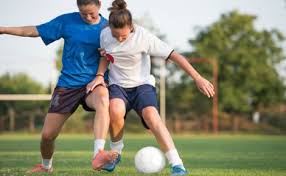
Another great tip – do something FUN! You’re much more likely to commit, and form good habits, if you make yourself accountable. So get a gym buddy, or join a team! 3/4 adults played sport growing up, but only 1/5 play as adults. Why is that?
Start Easy and Build Up From There
When building up from scratch, which I’ve had to do plenty of times, looking in the long term REALLY helps.
In my case, and that of many other patients who read my blogs, treatments and concurrent infections would bring me back to starting position, walking and body weight exercises were excellent in building me up. I started with push-ups, squats and sit-ups in front of the TV. Those things gave a good burn and made me feel like I did something and gave good, constant improvements when I did them consistently too. I didn’t just like walking for no reason, so I used my mind and my interests to my advantage and started walking down to the river with a rod in hand, looking at the tides, watching the small fish and how they moved, and getting good ideas and experience to improve my fishing. Basketball – my favourite sport – always keeps me motivated, and watching a good basketball video or movie would always get me up and ready to have a shoot around. You can use whatever passions you like. Cycling, rock climbing, diving, whatever you want to motivate you to keep you in the gym or in the pool or on the track.
Make exercise time valuable. I know many students find it hard to sit down and study – so download your lectures and put them onto your music player and go for a walk or run. Same thing goes for podcasts of your favourite radio shows, or just blasting your own music. Makes it easier and even fun to train – in fact, Jana Pittman, a classmate of mine does this to keep up with medicine and still train at an Olympic level.
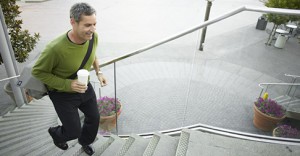
The power of incidental exercise doesn’t just stop at boosting the calories you burn a day, but also extends to formulating strong, neuroplasticity-moulded, attitudes towards exercise. Each time you pick the stairs – you make yourself more likely to pick them next time!
Don’t Be Shy, Or Worry About What Others Think of You
Taking that first step was hard for me. After chemotherapies, where I’d have to start from scratch, I’d always feel embarrassed and self-conscious at how little I could do, and also about how weird I’d look. You may feel the same way when someone racks up more weight than you can squat on the bench press, or when someone laps you in the pool or when someone blocks you on the basketball or volleyball court. Whenever I wanted to work out, I would always feel the stares of others on me and that stopped me from wanting to go out and get healthy in the first place. When you take a step back and see it in another way though, you’ll see that you’re stopping yourself from being the healthiest and happiest version of yourself because of what other people may be THINKING about you. Read more about how I managed to get past my self consciousness and become the most confident, happiest version of myself here.
Overall – losing weight and getting fit and healthy is NOT something hard. The only thing standing in the way of you getting there is YOU and your mindset. Get your mind on your side and the rest will become easy.
Those fad diets and boot camps can help lose weight and they do work. But they’re not easy to maintain – they’re not for everyone. Using your mind to your advantage is the best thing you can do to help you get healthy.
I wrote this part in April 2016. I went from 97kg in November 2015 (after I gained bout from that third bout of cancer) to about 80kg now. And I’m in that luxurious position of needing to gain weight.
As of Sept 2021, I’m at 74kg. I haven’t ever tried to lose weight.
Feel free to leave any tips of your own down here. To help me and others along on their journey to get fit and healthy.
As usual with all my posts – all sources are linked here. I don’t have enough time to reference them all – but all science claims are backed up by relevant peer reviewed sources.
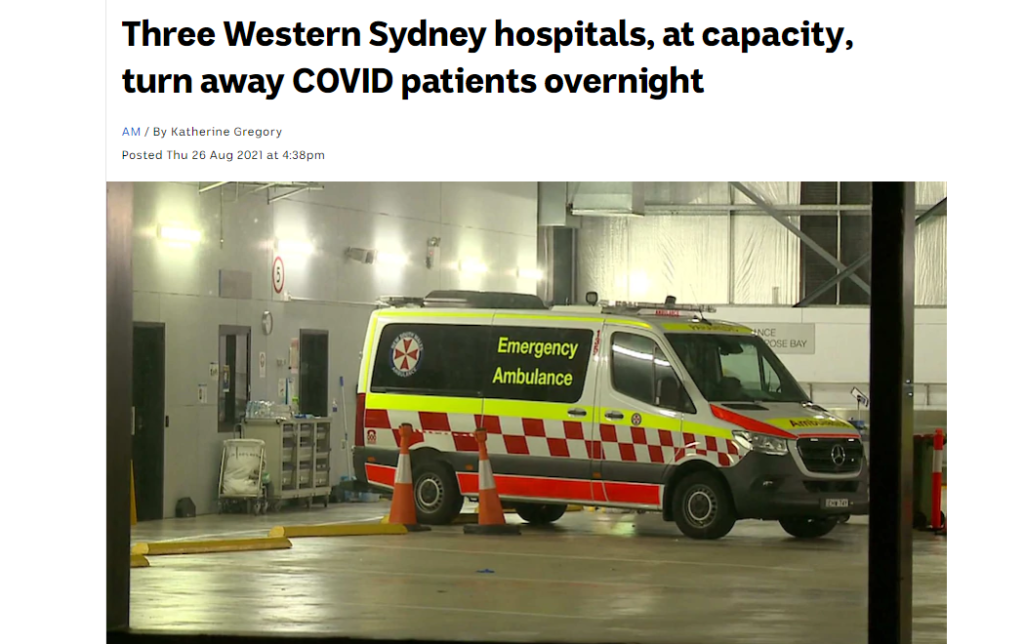
But there is a way we can break free of this. And we NEED to give it a shot.
There’s a country that’s beaten COVID back, numerous times – even before the vaccine – and even after the Delta strain, WITHOUT LOCKING DOWN. They didn’t even close borders. And they’ve controlled a surge of the delta strain (it surged despite >80% of the adult population being vaccinated) with this strategy.
Well there is. What country is that? Iceland.
So how is Iceland, the country antivaxers said was proof vaccinations don’t work, beating COVID/doing this?
Watch this video to find out how, and keep on reading to see EXACTLY how we could do this in NSW.
By testing everyone. Even asymptomatic people.
And then getting people to isolate, not just people and their households, but close contacts too for a full 14 days, and following up on them. Regularly.
Why does this work? Well, the thing that’s made COVID dangerous is the fact that you can spread it for a long time while asymptomatic. The delta strain is worse. This Nature lay person summary breaks down why well. You start detecting the delta strain 4 days after exposure, versus 6 for other strains, and you have 1200 more viral particles than other strains too, meaning you’re more infectious, and more likely to spread it, for longer.
A lot of the time, you’ll still be asymptomatic during this. You won’t even know you’re spreading it. Which is why the delta strain’s R0 – a measure of its transmissibility – is 2 – 4x higher than previous strains.
This probably makes testing asymptomatic people even more important.
Yet our health minister wants to stop people from getting tested. Probably because the time to getting test results back is getting too high (this, at least, is reasonable).
So how can we do what Iceland did, despite having 20x more people?
By doing something no-one else is, yet. Rapid antigen test screening.
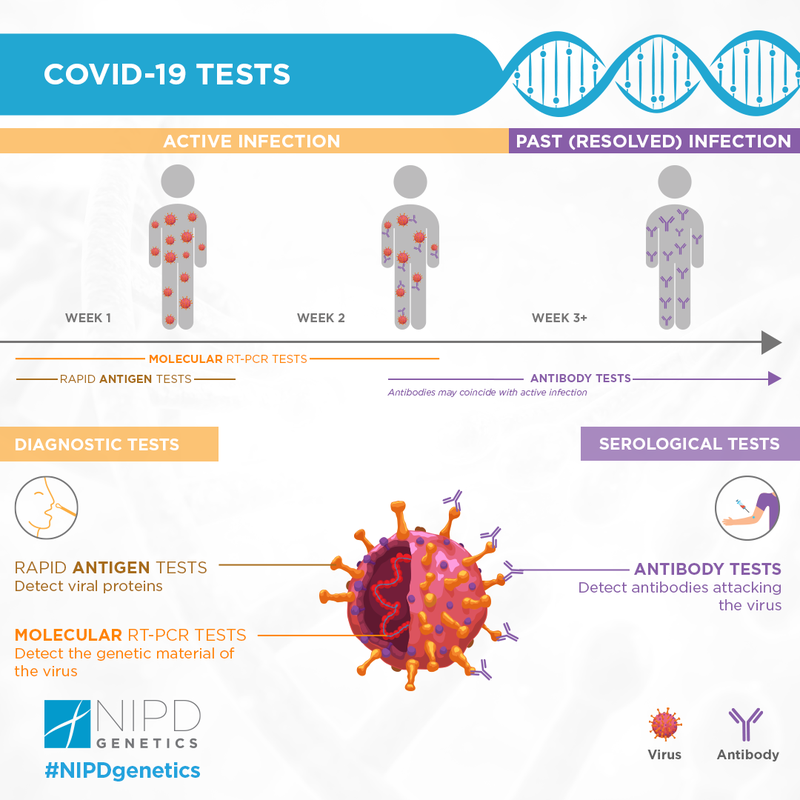
Rapid antigen tests aren’t as sensitive, but they’re cheap, can be used to test more people, more regularly, and perhaps our best way out!
PCR testing measured by labs is resource intensive. And it costs a lot too. Sydney spent over half a billion on PCR tests in the first month of the pandemic. It’s been a month since and testing has gone up MORE.
Labs earn between 60 and 120 dollars per test.
A rapid antigen test costs $5-10. Even though NSW requires healthcare staff do this, currently, other nations sell these over the counter, and are doing them at home.
Yes, they’re less sensitive meaning you’ll miss more cases (they accurately pick up 72% of symptompatic cases, and 58% of asympomatic cases),
But first off – you’ll be able to test 10, 20, maybe 30x more people at the same cost. Statistically speaking, you’re DEFINITELY – 100% – gonna pick up more cases if you screen this many more poeple!
And secondly – it was found that if you repeated these tests every 3 days, the sensitivity rose to over 90% mitigating its lower accuracy.
We do need highly accurate PCR tests for sure. But save these for people who had huge exposure, their household members and people who work in hospitals.
Give out everyone who needs to work, people in high risk areas, and more these tests, and then have them confirm this with a PCR, and we’re half way there.
This is VITAL. Not only has this been shown to work in Iceland, in real time (it’s even working against the Delta strain), we know that asymptomatic people comprise a large proportion of actual COVID cases –43%, in previous strains (which were less transmissable).
The next step – follow up with them REGULARLY. Call people up. Make sure they’re at home, and get close contacts to stay home and remind them to stay home too. Yes, that’s a lot of effort. But first off – we KNOW this works. It didn’t just work in Iceland. Early on in the pandemic, Italy tested 3300 people, found out 43% of cases were asymptomatic, and got these people, in addition to the symptomatic population to stay home. This is what stopped COVID-19 in its tracks.
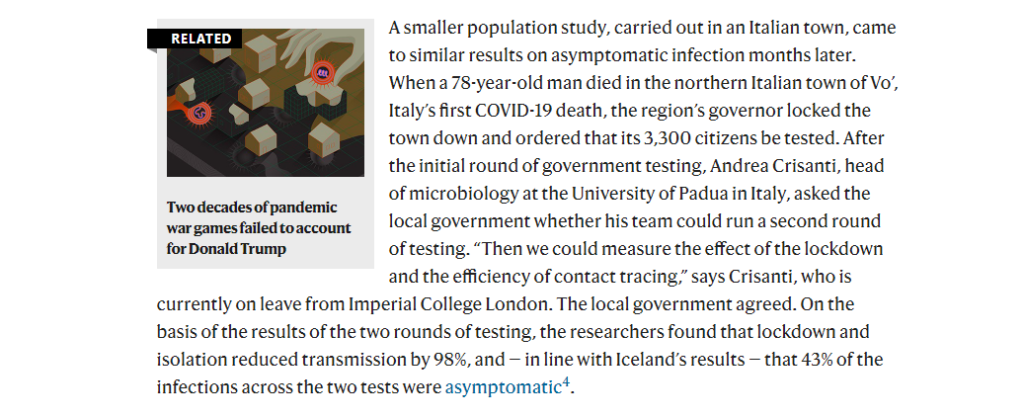
Right now, it seems hard to do this in Sydney, a population of 6million people – 10x more than Iceland. But we have 21000 active cases. If you dedicated 100 of our troops (recently 500 soldiers were recruited to help this) to this, calling people up every 3 or 4 days, that’s only 20 calls a day. I did that every 2 hours when calling people for my startup! Target inspections and house calls to those not picking up, you’ll also save money and resources doing this.
We spent $580million on rapid antigen tests in the first month of lockdowns in Medicare costs alone. We’re over 2 months in now and we’ve tested 3x more people.
We spent at least $30million per day doing PCR tests.
We could do 2million screening rapid antigen tests per day, and still do over 50,000 PCR tests on those who are symptomatic, who’ve been exposed recently and for frontline workers, and SAVE money! That’s enough to screen EVERY SINGLE PERSON IN SYDNEY every 3 days!
From this, we’d
NSW Health doesn’t release or capture data on how long people were asympomatic before becoming positive [you can estimate that info by looking at where random cases may have picked it up, this may be why we’re seeing so many people active in the community.
It’s not their fault all time. Many may never have known they were infected!
Almost 4 weeks ago, they were talking about rapid antigen tests. They’re already approved. It could be a lot of logistical work. But we could use an honesty system – there are low rates of people actually going out after they’ve known they have COVID – or implement an application which allows us to capture this. The NSW Government is working on an app to do this. Why not include rapid antigen tests as a part of this to at least give us this option?

If you’ve reached this point, share this with people. The more people who know about this the better. Unfortunately, noone listens to me haha. But share the video too and hopefully we can get this out there.
I’m not a public health expert (though I have some relevant qualifications in this space and have done public health as part of my medical degree). But I’m not saying we should rely on rapid antigen tests either. We need regular old, highly reliable PCR tests too. The key to Iceland’s success is they also follow up on people.
The only restrictions they’ve imposed happened very recently – to outside travellers. This strategy worked so well for them, they literally had open borders and beat back COVID every time!
I dunno about you – but I wanna fish sooner. I wanna go back to med school, knowing I’m a little bit more safe, I’m sure you wanna work too. This is a hypothesis, but something we should consider at least! Comment your thoughts below. And subscribe to my email lists to get updates on this and to keep learning.
]]>As usual with all my posts – all sources are linked here. I don’t have enough time to reference them all – but all science claims are backed up by relevant peer reviewed sources.

But what if I told you there’s a country that’s beaten covid back, many times, even before the vaccine, consistently without lockdowns. They didn’t even close borders. And they’re doing this with the delta strain too.
Well there is. What country is that? Iceland.
So how is Iceland, the country antivaxers said was proof vaccinations don’t work, beating COVID/doing this?
Watch this video to find out how, or keep on reading.
By testing everyone. Even asymptomatic people.
And then getting people to isolate, not just people and their households, but close contacts too for a full 14 days, and following up on them. Regularly.
Why does this work? Well, the thing that’s made COVID dangerous is the fact that you can spread it for a long time while asymptomatic. The delta strain is worse. This Nature lay person summary breaks down why well. You start detecting it at 4 days, versus 6 for other strains, and you have 1200 more viral particles than other strains too, meaning you’re more infectious, and more likely to spread it, for longer.
This probably makes testing asymptomatic people even more important.
Yet our health minister wants to stop people from getting tested. Probably because the time to getting test results back is getting too high (which is reasonable).
So how can we do what Iceland did, despite having a much larger population?
By doing something no-one else is, yet. Rapid antigen testing.

Rapid antigen tests aren’t as sensitive, but they’re cheap, can be used to test more people, more regularly, and perhaps our best way out!
PCR testing measured by labs is resource intensive. And it costs a lot too. Sydney spent over half a billion on PCR tests in the first month of the pandemic. It’s been a month since and testing has gone up MORE.
Labs earn between 60 and 120 dollars per test.
A rapid antigen test costs $5-10. Even though NSW requires healthcare staff do this, currently, other nations sell these over the counter. You could mail these out.
Yes, they’re less sensitive meaning you’ll miss more cases.
But you’ll be able to test 10, 20, maybe 30x more people at the same cost. Statistically speaking, you’re definitely, 100% gonna pick up more cases.
We do need highly accurate PCR tests for sure. But save these for people who had huge exposure, their household members and people who work in hospitals.
Give out everyone who needs to work, people in high risk areas, and more these tests, and then have them confirm this with a PCR, and we’re half way there.
This is VITAL. Not only has this been shown to work in Iceland, in real time (it’s even working against the Delta strain), we know that asymptomatic people comprise a large proportion of the actual COVID population.
The next – follow up with them REGULARLY. Call people up. Make sure they’re at home, and get close contacts to stay home and remind them to stay home too. Yes, that’s a lot of effort. But first off – we KNOW this works. Not just from Iceland. Early on in the pandemic, Italy tested 3300 people, found out 43% of cases were asymptomatic, and got these people, in addition to the symptomatic population to stay home. This is what stopped COVID-19 in its tracks.

Right now, it seems hard to do this in Sydney, a population of 6million people – 10x more than Iceland. But we have what, 21000 active cases? If you dedicated 200 of our troops (recently 500 soldiers were recruited to help this) to this for everyone, every 3 or 4 days, that’s only 10 calls a day. I did that every hour when calling people for my startup! Target inspections and house calls to those not picking up, you’ll also save money and resources doing this too!
NSW Health doesn’t release or capture data on how long people were asympomatic before becoming positive [you can estimate that info by looking at where random cases may have picked it up], this may be why we’re seeing so many people active in the community.
It’s not 100% their fault. They just didn’t know they were infected!
Almost 4 weeks ago, they were talking about rapid antigen tests. They’re already approved. I know it’s a lot of logistical work. But if someone got this out to people, we could still slow this down, rather than risk COVID spreading out of control.

If you’ve reached this point, share this with people. The more people who know about this the better. Unfortunately, noone listens to me haha. But share the video too and hopefully we can get this out there.
I’m not a public health expert, I have some relevant qualifications though. But I’m not saying we should rely on rapid antigen tests either. We need regular old, highly reliable PCR tests too. The key to Iceland’s success is they also follow up on people.
The only restrictions they’ve imposed happened very recently – to outside travellers. This strategy worked so well for them, they literally had open borders and beat back COVID every time!
I dunno about you – but I wanna fish sooner. I wanna go back to med school, knowing I’m a little bit more safe, I’m sure you wanna work too. This is a hypothesis, but something we should consider at least! Comment your thoughts below. And subscribe to my email lists to get updates on this and to keep learning.
]]>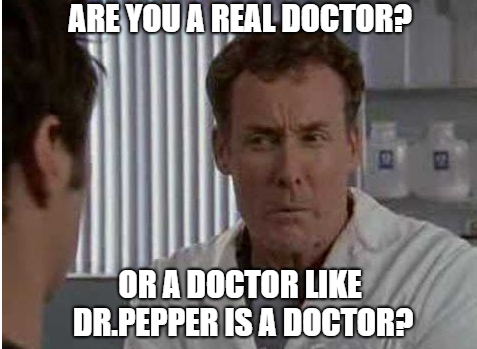
The full document they put out can be accessed here. Or just scroll down. I’ll break these down point by point –
2) “The vaccine was approved early. It did not show long term efficacy.”
Yes, it was approved early, but this was due to it being an emergency. Significant data on safety had been gained prior to this, and efficacy was demonstrated to be very high through a trial with rigorous design, and COVID had killed hundreds of thousands in America alone to this point. There’s a reason this provision in FDA regulations exist. We are still collecting data on long term efficacy, but it’s been demonstrated regularly that long term immunity is formed after COVID-19 vaccination[1, 2].
https://onlinelibrary.wiley.com/doi/10.1002/cti2.1319
https://www.nature.com/articles/s41586-021-03738-2
3) “You didn’t get enough of a sample size and some age groups weren’t sampled.
So this is the thing. Vaccine studies don’t even need that many participants to get statistical power to make an apt conclusion. This study had MORE than enough (you need 10-15k to get statistically significant results typically). COVID-19 vaccine studies that led to Pfizer getting emergency approval had over 20,000. To this day, 4.5 BILLION DOSES HAVE BEEN ADMINISTERED to 31% of people in the world! This is no longer an experiment.
The fact that only 2 patients in younger groups got COVID doesn’t mean it’s statistically insignificant, it means the vaccine is very effective. You compare the numbers in both cohorts, and see how much of a reduction there is to calculate vaccine efficacy. So that part too, is wrong. In later ones they make further claims about lack of vaccine efficacy,
This study on the 2018 influenza vaccine enrolled 10,000 people. This one did 3600. That’s more than enough. If anything this had even more proof than most. It was approved for emergency use due to there not being long term data on efficacy. Safety wise, vaccines are very largely very very safe.
https://cdn.pfizer.com/pfizercom/2020-11/C4591001_Clinical_Protocol_Nov2020.pdf
https://ourworldindata.org/covid-vaccinations?country=OWID_WRL
https://clinicaltrials.gov/ct2/show/NCT00711295
https://pubmed.ncbi.nlm.nih.gov/33065035/
4) “This is NOT shown to be effective in older adults.”
You could make that argument as mainly younger patients were included in this study, but since the approval, we’ve gained a lot of data on this. 156000 patients over 70 were studied in this BMJ trial that showed 95% efficacy. This review found similarly high results.
https://www.bmj.com/content/373/bmj.n1088
https://www.ncbi.nlm.nih.gov/pmc/articles/PMC8024166/
5) Not effective in teens.
Subsequent studies on this exact age group cited as a concern by this group of ‘physicians,’ (12 – 15 year olds) show very high efficacy of 100%.
This is not being seen now as we see many younger patients being infected with the delta variant. 30-40 year olds have 4x higher risks of death compared to 18 year olds. This is affecting more young people, likely because vaccination rates are not as high in these populations. And the delta strain seems to be more dangerous. So vaccinate!
https://www.bmj.com/content/373/bmj.n881
https://www.cdc.gov/coronavirus/2019-ncov/covid-data/investigations-discovery/hospitalization-death-by-age.html
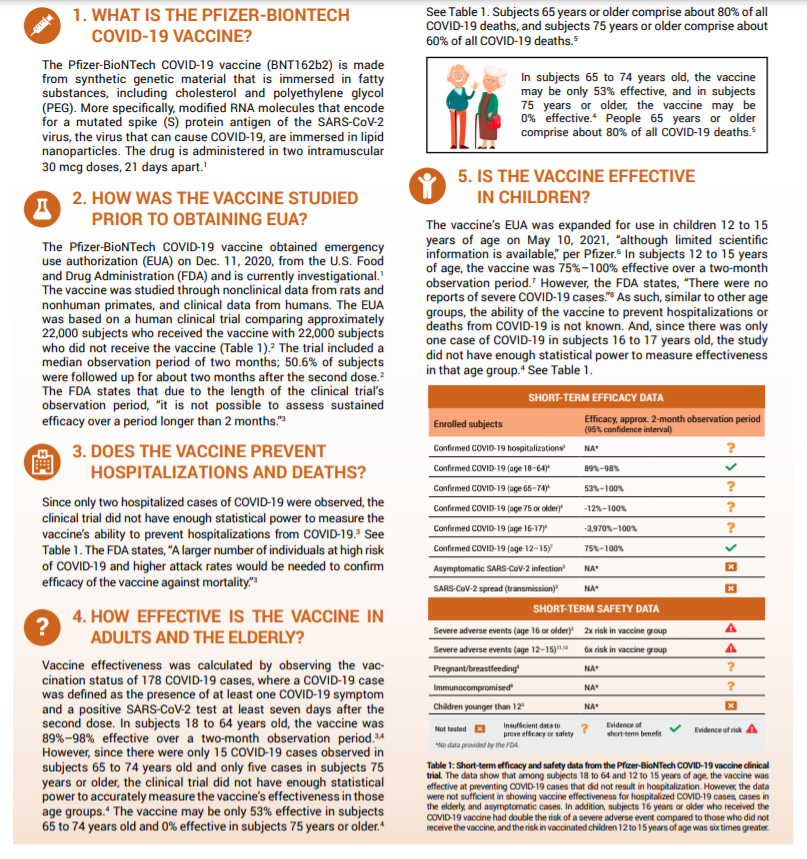
6) “The vaccination doesn’t reduce transmission”
Transmission reduction data against the delta variant is now available. Studies show efficacy against transmission ranges from 50 – 78% – against delta.
But you know what is very effective in reducing transmission of viral illnesses? Masks. See my blog post/mini review on them I posted earlier.
https://www.bmj.com/content/374/bmj.n1960
7) “Serious adverse effects are high.”
Serious adverse effects – they included things like muscle and joint pain, which occurs in 25% of patients and 17% of patients. Pain does suck, but it’s highly subjective. Other events included and mentioned first like diarrhoea and vomiting. Diarrhoea occurs in 1/10 COVID patients by ways of comparison. 0.07% of patients vomited after vaccination, 0.12% got diarrhoea (1/1000 or so). The source they referenced for this was a Pfizer vaccine trial’s clinical protocol which has no results, so I’m not sure where these numbers even came from.
We know incidence of things like myocarditis due to the vaccine are 1/100,000, and 0 deaths occured from this over 2million vaccines.
https://jamanetwork.com/journals/jamainternalmedicine/fullarticle/2773790
https://www.ncbi.nlm.nih.gov/pmc/articles/PMC7141637/
https://www.ncbi.nlm.nih.gov/pmc/articles/PMC8152224/
https://jamanetwork.com/journals/jama/fullarticle/2782900
8) “COVID-19 is less dangerous than the vaccine.”
Finally, they end this suggesting vaccines are more dangerous than COVID in young patients, rehashing data they’ve made from invalid assertions earlier, that have been proven since in numerous studies done on young people, and old people. Long term safety data on vaccinations weren’t available then, but they are now. Long COVID studies are coming out though – and the consequences are dire. Studies show that 60 days after infection, 87% of people still had a COVID 19 symptom, with 55% having 3 or more. Scarring is present in the lungs of many. 20% of people hospitalised – which with delta, we’re seeing is occurring in younger patients – have permanent pulmonary fibrosis. Over 70% who are ventilated show this after 4 months.
https://thorax.bmj.com/content/early/2021/05/13/thoraxjnl-2021-217031
Ultimately, we know this disease kills the unvaccinated more than any other groups – 99.5% of people who have died are unvaccinated. It’s not only killing people directly, but also people like me who are at risk, and need things like oral cancer biopsies (which I can’t get here in Aus as elective procedures are shut down).
https://www.forbes.com/sites/jemimamcevoy/2021/07/01/995-of-people-killed-by-covid-in-last-6-months-were-unvaccinated-data-suggests/?sh=6daccc9f493d
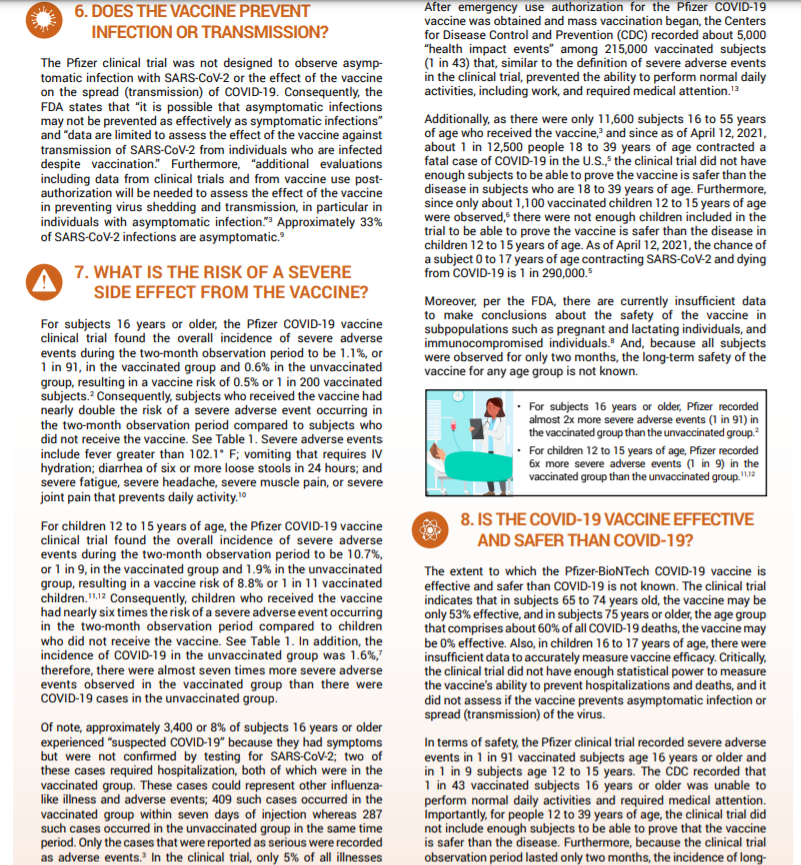
References:
- https://www.nature.com/articles/s41586-021-03738-2
- https://onlinelibrary.wiley.com/doi/10.1002/cti2.1319
And sign up to my email list (I don’t post often, but you’ll be notified when I do this way!).
Bone Marrow Transplants
The bone marrow transplant procedure, in a nutshell, is basically getting someone else’s blood stem cells (haematopoiec stem cells is the technical name), located in their marrow, and infusing it into you, so it settles. They aim to get someone else’s immune cells in you, to kill off your cancer (your immune cells are made by your blood stem cells). And the major side effect, other than the dangerous infections you can get during the procedure and in the first 30 days due to, largely, chemo, is graft versus host disease, which can last a long time in others (but in small doses, is actually a good sign the process is working).
How it works for the donor – it’s taken peripherally from the arm, after getting a medicine which makes those stem cells enter your circulating blood for a few weeks (click here to learn about that).
On the recipient’s end, you receive it through an infusion into your veins, in most all cases. It eventually finds it way into your marrow and starts producing your donor’s blood cells (including white, immune cells), after a few weeks (it took 3 weeks for mine to engraft on both occasions, but it can vary).
The idea is, though you and your donor are matched as well as you can be – there will always be slight differences between you and them, which makes them recognise cancerous cells and kill them off, where your immune system may have lost the ability to do. This is a good thing in that it’s how the BMT or SCT (stem cell transplant) is supposed to work. But it also is the cause of the major side effect, graft versus host disease, where your donor’s cells attack your own organs. I’ll get to that later, here’s how it all goes though.
Prior to the transplant, you receive workup of some kind – often they want to ensure your underlying disease is under control. If it’s a blood cancer, often that will involve chemotherapy. Once they have the disease and any underlying conditions mostly under control, and they find a match, and coordinate timings (usually, you want to get the donor’s cells into you as soon as it’s taken from them), they begin the workup to the actual stem cell transplant process.
Usually, a week or so before, they’ll begin immunosuppressive regimens and chemotherapy that are designed to kill off your current immune cells. In younger patients, they may also offer total body irradiation, which is a high dose of radiation given to your entire body (in younger people, marrow can be produced all over the body, so all areas are targeted, though they will provide shielding to your brain and lungs, in most cases). The idea is to kill off your old bone marrow’s cells and replace them with your donors’.
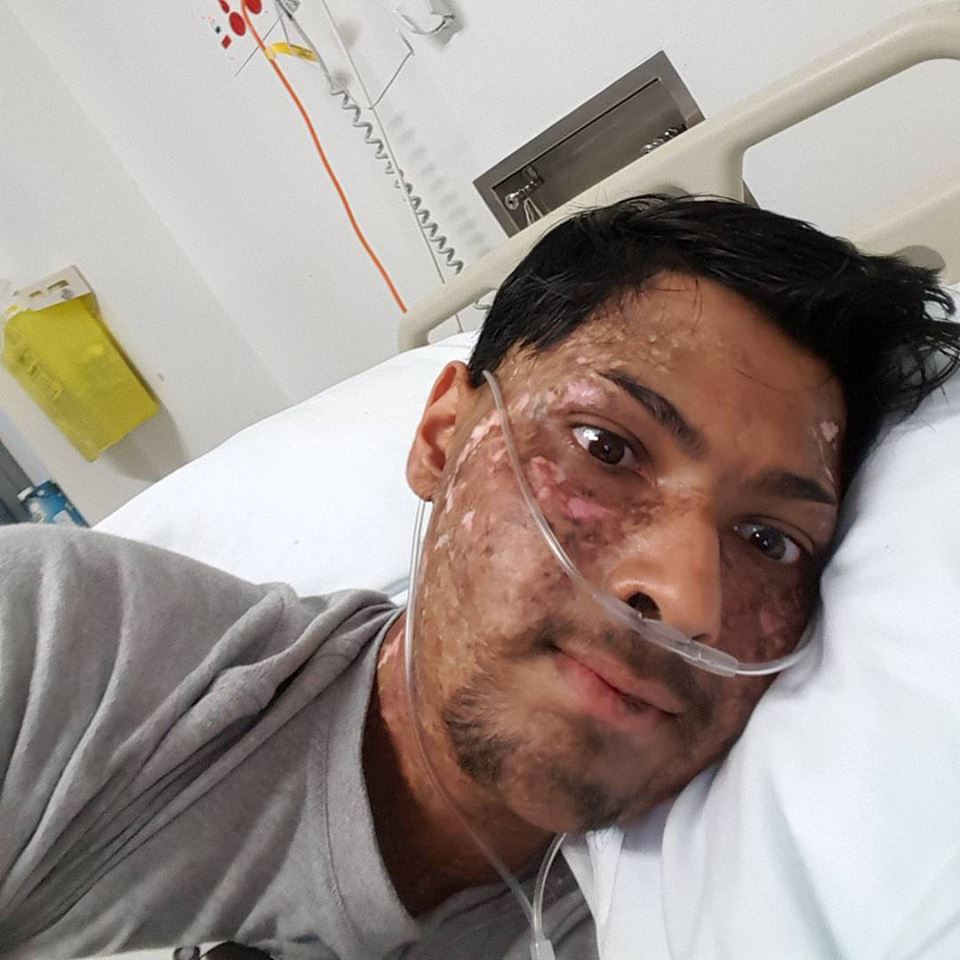
I won’t lie, the BMT process and chemotherapy is tough. But it is lifesaving. Definitely listen to your doctors!
During the next few weeks, like many chemos, you will have a lot of your immune cells and your blood cells obliterated. So you’ll be very susceptible to infections. It is very important to do everything you can to avoid infections in this time, from limiting visitors (especially sick ones), to cleaning and bathing regularly (even when you won’t feel like it) and following your doctors’/nurses’ orders. You also may experience other side effects such as nausea, gut pain (from your stomach lining cells dying off), fatigue and general unwellness. There are many chemotherapy specific side effects too that may occur, and you may also get other side effects – eg. with TBI (total body irradiation), you often get mucositis – inflammation of your mouth and throat – which can be extremely painful. I’ve personally experienced this myself and highly recommend you follow doctors’ suggestions and get ENG tubes if they think it’s appropriate and helpful, and getting pain teams to come in and help too. Having said that – my second transplant was a ‘reduced intensity chemotherapy’ regimen. I only had nausea and didn’t get an infection once, and it went quite smoothly compared to the first. Everyone’s different, every regime is different, and even in one person, at different time points, you can react differently.
Other things they may do in your workup/the month before your transplant, is check your heart, and lungs, and, if you’re in that age category, your fertility. They’ll put a line in just before they begin treatment in hospital, this may be in your arms, or via ports they put into your neck. During the transplant, and the immediate transplant workup, they’ll watch over you, do bloods regularly, get scans when required, and treat things like infections. Infections are often the most dangerous thing you may face, but they’ll be sure to give you antibiotics, and other treatments, as required during this time frame.
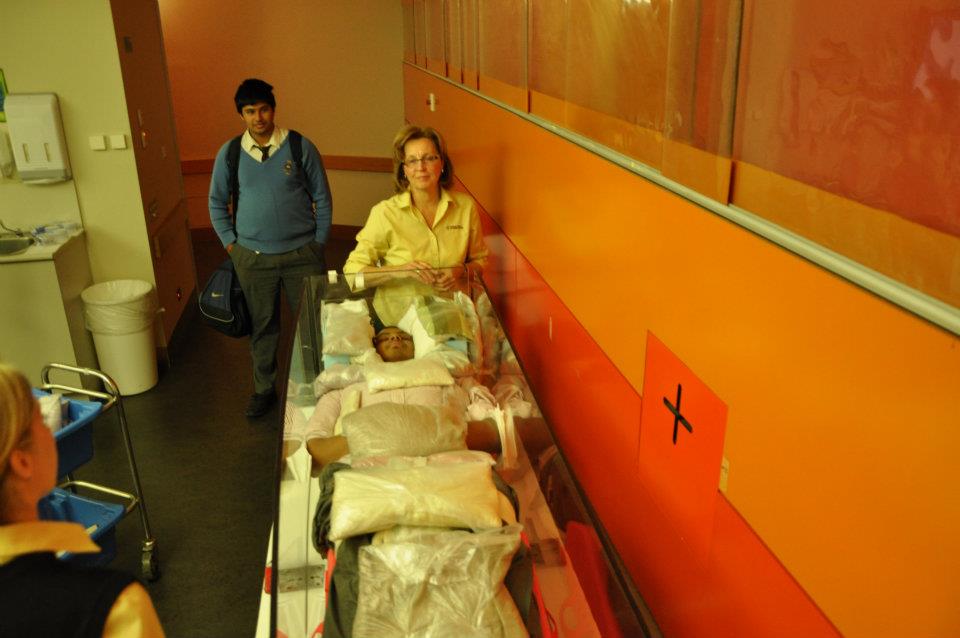
This is the TBI – total body irradiation process. This is usually done in younger patients, as they are more likely to have marrow that persists in other bones of your body (adults often only have it in their sternum and hip bones). Hence why they shoot radiation at your entire body (left of this photo is a machine which does this). The rice bags keep you still and provide some protection to important organs like your brain and lungs. And they keep you still. It lasted 30 minutes, and I had 5 sessions over a week at a special clinic the week before my transplant). Straight after you may get a burning sensation in the skin (this is resolved by creame in most cases). The other common side effect is mucositis, a sore throat, which can be very painful. So listen to your doctors if they recommend a feeding tube! I learned that the hard way!
At some point, often 3 – 4 weeks after “Day 0,” where they infuse you with your donor’s cells, you’ll ‘engraft’ and have your donors’ cells start making cells in your blood. They’ll be monitoring for this. After this, a good number of people get acute graft versus host disease, which can affect any of your organs, and can be pretty severe. This occurs in the first 90 days usually, and can affect any of your organs – from your skin, to eyes, to liver, to gut. I personally had bad skin and liver and gut GVHD (in my first transplant, I had skin and liver aGVHD, and in the second, liver and gut aGVHD). Not everyone gets GVHD. It can be a good sign that you’re getting the ‘graft versus disease’ effect too (where your donor’s cells kill off/stop your cancer cells from returning), but too much GVHD can be bad too. Your doctors will treat you after you engraft with some medicines that suppress your immune system – often cyclosporine, but different doctors/patients use different treatments. If GVHD manifests and gets severe, they may add more or increase your dose. Or they may reduce them over time.
You’re still not out of the woods after this time frame. You can get infections, still. And with GVHD – days can be critical when it comes to your outcomes, so make sure you tell them of anything you may experience. With different organs, you may experience different signs. Eg – with the skin, you may get rashes or feel like your skin is burning. With the gut, you may get diarrhoea, sometimes constipation. With the eyes, you may get burning or find it difficult to open your eyes (which may be due to skin GVHD affecting the skin around your eyes). It varies from person to person. It’s VERY important you see your doctors if something happens. But sometimes, you won’t feel anything. With my liver graft versus host, I didn’t feel a thing, but had very very high liver enzyme tests.
I couldn’t find a clean, clear photo of my skin, so sorry for the captions. But this is chronic skin GVHD – I have quite severe chronic GVHD and it’s not too bad, other than the looks (I don’t mind the looks though – this is how I dealt with the social anxiety that comes to many post transplant, due to the change in looks). Acute skin GVHD can be more red and flared, and may occur anywhere. It may burn or itch. I know it’s hard, but try not to itch! But right now, as someone with chronic graft versus host disease, I can’t feel it, it isn’t painful, but it may make my skin less elastic, and does impede my joints a little bit. But I’m largely OK now!
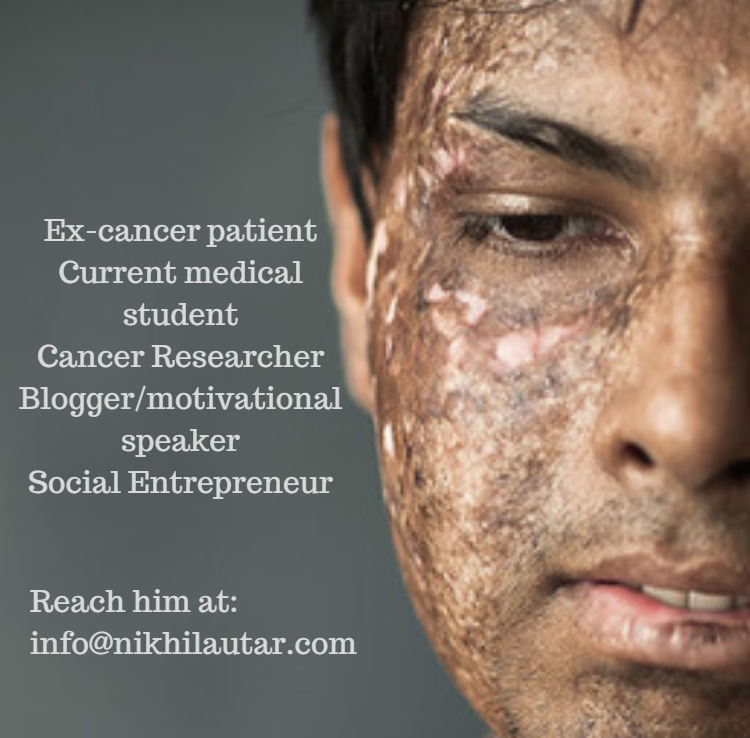
Usually, they’ll tell you to come into hospital as soon as possible if you get a fever or infection symptoms of any kind. With COVID-19 going on right now, clarify with your doctors if or when to come in. Many hospitals, including mine, will give you a card to get you into ED faster. Even after the pandemic ends (which may not be for years officially), it may be wise to wear a mask and avoid crowded areas too.
Depending on your donor and your status, you may also get exposed to viruses that may put your graft (your transplanted cells) at risk. Your doctor will likely have you on prophylactic, preventative, antivirals, antibacterials, and maybe antivirals too to prevent this. And they’ll likely check your levels of various medicines, and monitor for these viruses too. This is why it’s really important to see your doctors and get your blood tests as much as they want you to. Hopefully, this will go from weekly appointments to fortnightly, to monthly, to 3 monthly, to yearly. And then comes long term monitoring.
You also generally feel tired. I did after both transplants for months. Some of the medications you may be put on have annoying or frustrating side effects – eg. prednisone is a steroid medication (not the muscle building type unfortunately), which can make you angry, make it hard to sleep, and make you gain weight. But it’s also lifesaving. It’s important to keep in touch with your doctors to monitor this.
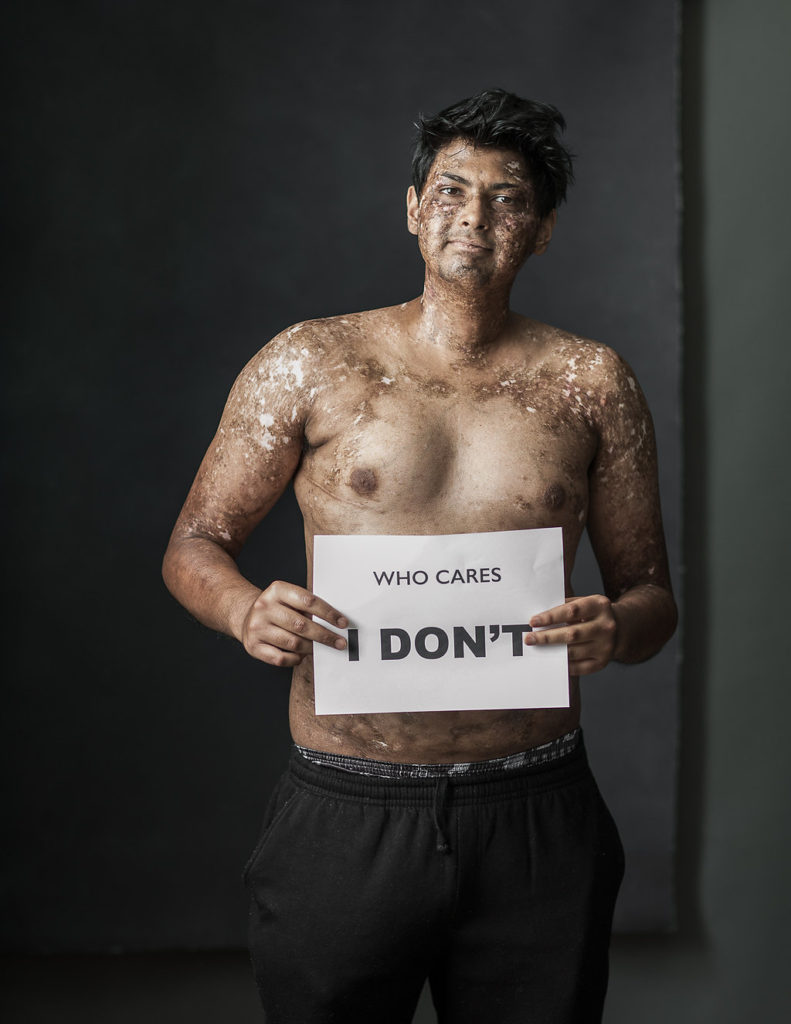
The way cancer changed me used to really impact my mental health. To the point where, even though it was harmful for my health, I didn’t want to go out because of how it affected my looks. This is me years afterwards, but straight after chemo, on 100mg of prednisone, I had the classic “chipmunk face.” But I got over that after a while. This is how. I hope it helps those of you who may suffer from this out too.
After 3 months, you may also develop chronic graft versus host disease (cGVHD), which may manifest all over your body, and may get severe too. it’s important, once you get signs of anything weird, to tell your doctors about this so they can treat it, again. And treatment may last longer or be chronic, as the name implies. I still have some, 8 years out. But again, everyone’s different in this. I’ll make a post about this later – but there are many organs it can impact, from your skin, to eyes, to lungs and in rare cases, even heart. It’s important to get on top of this early. But the good news is, in many patients, it either ‘fizzles out’ or ‘plateuas.’ But without treatment, it can worsen, even after you’ve got it under control. So stay connected to your doctors and listen to their advice!
That’s the transplant process, in summary. I know it’s a lot of information. But the main thing, is it a marathon. But it is also curative – it was one of the first curative options we had for any cancer. Though it can be dangerous, it has a good chance of fixing many diseases. Your doctors wouldn’t be doing this to you if they didn’t think it could help.
I hope it makes sense. Let me know if you have any more questions. And sign up, do email me at info at nikhilautar dot (com) with any questions, and stay in touch!
But I have a LOT of questions that I guess only patients can answer. The little, tiny things – like:
1) Where and how do you prick (for insulin and blood glucose monitoring) EXACTLY to minimise pain?
2) Got any ideas of what things I can eat? I’m low carbs AND low fat.
3) I went really low, blood sugar wise, after exercising a chunk the other day. Even when I’m on insulin, how do I manage this? Should I keep some #gatorade or #jellysnakes at all time and take them when I’m feeling tired?
4) I’ve got a severe autoimmune-like disease, how do I tell if I’m hypo, or just having a bad day, or flare up?
5) Any devices or recommendations you can make for this all?
6) Is there an app for all this (the blood sugar app is OK, but like what works for you guys)?
7) Any good resources? Anyone I should follow with this?
8) What are your anecdotal experiences of medicines etc? (Don’t give medical advice in the comments, but do share your personal experiences!)
I just have a LOT of questions. NikhilAutar.com/diabetesnow, I’ll try and compile the answers.
But I’ll try and share as I learn as well, because though I thought I got it, there’s so many tiny things that are confusing with this disease. But I’m getting there. One thing I’ve been doing – I’m cooking a lot now. And it’s been fun, being able to cook without cutting myself and feeling tireder after a meal (since my cramps are a LOT better). I’ll share those recipes too, because they’re actually so good!
#Diabetes #T2dm #Diabetic #newlydiagnosed #spoony #chronicillness #newdisease #spoonie #cancerlyf #lol #medicine #doctor #medschool See Less

Biden’s Allegations of corruption;
https://fortune.com/2020/10/23/trump-biden-debate-2020-election-corruption-china-ukraine/
Trump approves pipeline he had at least $1-2million investments in.
https://www.theguardian.com/us-news/2016/dec/02/donald-trump-dakota-access-pipeline-support-investment
The leader of the free world sells beans.
https://www.thecut.com/2020/07/trump-goya-beans-photo-fiber.html
Trump golf count; it only calculates the cost of travel, by the way. The actual charges Donald charges his own hotels for his trips (which is quite high) is equally astronomical.
https://trumpgolfcount.com/QD
Ivanka Trump’s brand that was promoted by the press secretary.
Trump leases his own officer for $2.4million from 2017 – 18
https://www.newsweek.com/government-paying-trump-tower-presidential-protection-638852
Jared Kushner and Trump’s business advisor taking almost $1billion directly from their first trip to Saudi Arabia.
https://www.bloomberg.com/news/articles/2017-05-26/the-kushners-the-saudis-and-blackstone-behind-the-recent-deals
https://www.vox.com/policy-and-politics/2019/9/17/20868358/donald-trump-saudi-money
Further Trump ties to Saudi Arabia which started decades ago.
https://www.businessinsider.com.au/trump-saudi-arabia-financial-interests-ties-hotel-bookings-sales-2018-10?r=US&IR=T
Kushner’s sister sold Visas to Chinese businessmen for $500,000 investment into their business.
https://www.washingtonpost.com/world/in-a-beijing-ballroom-kushner-family-flogs-500000-investor-visa-to-wealthy-chinese/2017/05/06/cf711e53-eb49-4f9a-8dea-3cd836fcf287_story.html
This reportedly increased to $3million/year around America after the first 18 months. He also claims COVID-19 relief for this.
The Saudi $1.4billion bailout of the Kushner family, right as a $1.4bn mortgage payment was due.
https://www.vanityfair.com/news/2019/02/qatar-666-5th-ave-jared-kushner
This directly led to Trump changing his stance from calling them a terrorist state to saving them from a war that would have destroyed them.
https://www.aa.com.tr/en/americas/qatar-trump-retreats-from-supporting-blockading-states/1988095
Tom Price buys $90,000 in pharma stock just before passing policies which further increased patent protection for them.
https://psmag.com/news/tom-prices-investment-portfolio-benefits-from-his-pharma-agenda
Michael Flynn takes $33,000 from Russia Today – one of the largest promoters of fake news in 2016.
https://www.usatoday.com/story/news/2017/03/16/michael-flynn-received-more-than-33000-russian-tv/99258514/
Steve Bannon steals $1.4million from a Go Fund Me for the border wall (through channeling it into his not for profit, and spending on himself.
https://www.abc.net.au/news/2020-08-21/former-trump-adviser-steve-bannon-arrested-fraud-conspiracy/12580952
]]>
But they don’t make you bulletproof.
I’m writing this because I’ve seen and been talking to a couple of very high risk friends, one who’s actively getting cancer treatment, the other halfway around the world, going out with masks. When I asked one – a friend who is on chemo (I was shocked that he was going to a stranger’s birthday party while Melbourne’s lockdown was going strong) – he said that did so because he’s wearing a mask, and that he should be fine. He’s either using a mask as a justification, or going out because of the mask.
It’s nuanced. It’s not easy to communicate, because we do want people wearing masks when they go out. But for years, its been suggested that we shouldn’t be giving people a false sense of security with mask usage[1,2]. The WHO didn’t make this suggestion out of the blue, as many on #MedTwitter suggest. Even studies modelling mask usage controlling the virus mention this[3].

There is evidence showing that this isn’t just conjecture too. This study used a location app to track individuals’ habits in mask mandated areas vs non mask mandated one. Those in mask mandate regions spent 20-30 less minutes at home, and more time in commercial locations directly after the mandates! It could be contributing to spread if there aren’t further measures taken by cities [4]. To be fair, this is a preprint, but unless it’s fraudulent, or sample sizes are incredibly small, a sharp drop in household days after mask mandates were given is telling. Perhaps it’s the mask mandates as opposed to the mask which got people to want to go out more. But that points to communication being an issue!
On the other hand, there is a review which suggests that mask doesn’t increase the risk of people going out that went viral. But though the medical world latched onto this, the study only showed that mask usage didn’t reduce handwashing. It didn’t (because frankly, it hasn’t been studied until recently), find if mask usage increased distancing[5].
I’m not saying that you shouldn’t wear a mask! The very opposite. Mask usage likely does reduce your risk of contracting a virus, and it IS definitively, through many studies, shown to reduce transmission if you happen to be ill in the community [7-9]!
But we should be telling people to wear a mask – IF You need to go out.
ESPECIALLY to those at higher risk. As many as 50% of the population in developed nations have a risk factor that increases mortality risk with COVID-19. There are many dying in their 30s. Long term complications are still not known!
If you’re at risk – Please, where possible, avoid going out if coronavirus is raging in your area. Listen to local health bodies and your doctors. That mask WILL reduce your risk most likely when you NEED to leave the home. And it can’t hurt you. But you shouldn’t be convinced that it will protect you. Even if you’re protesting a very good cause – if you or loved ones you interact with are at risk – I’d suggest you stay home.
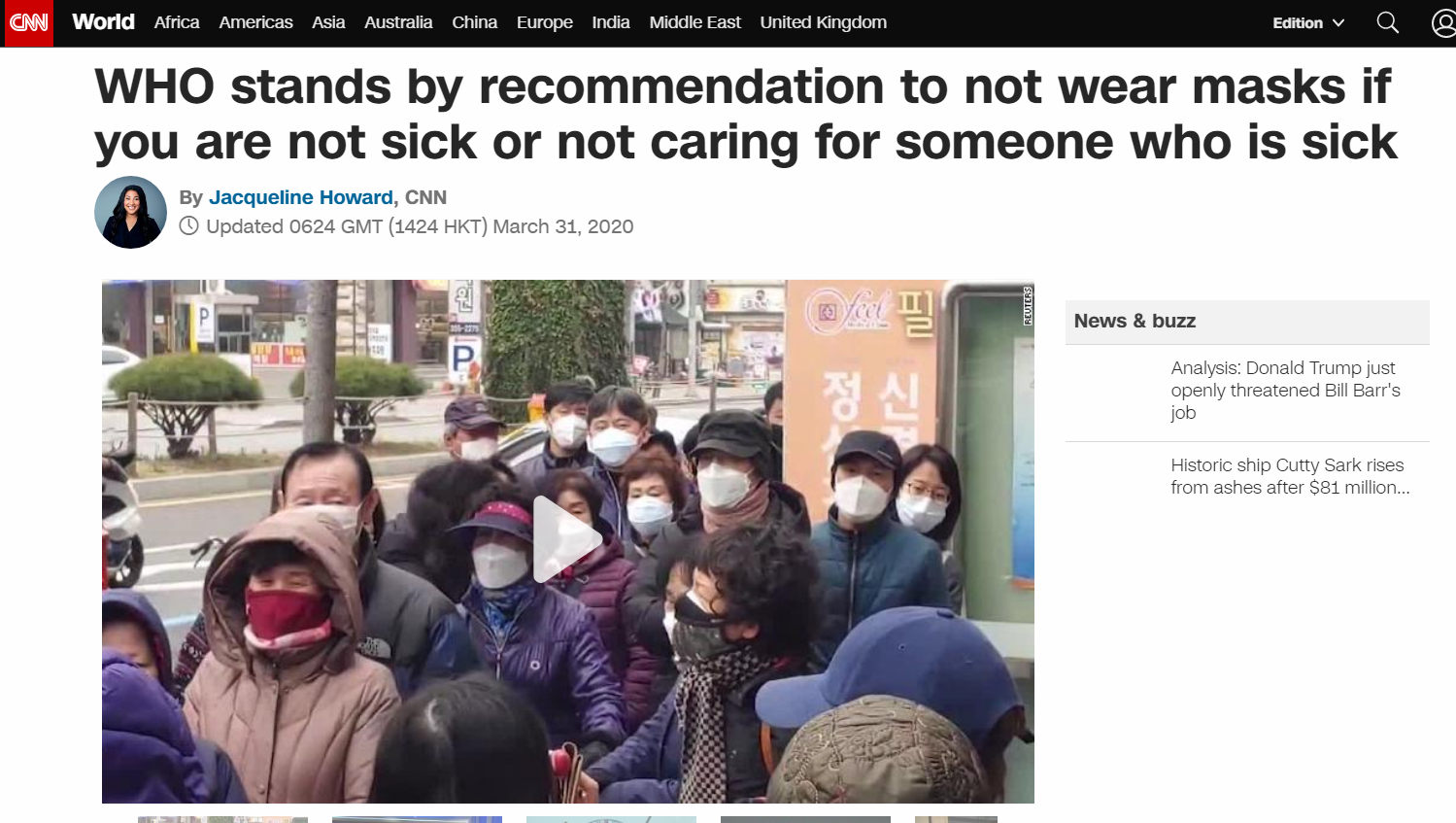
The fact is – the WHO came out early on not recommending masks, as did many other nations, because the small studies that have been done on them show that in community settings – mask usage doesn’t reduce your risk of infection.
This RCT showed that it didn’t reduce your risk of catching disease significantly in younger populations[6] This RCT showed difference either – though its primary aim was to look at household transmission reduction, it showed that influenza like illness (a primary way flus are tracked) contraction was similar in mask/non masked groups [10]. They definitely DO reduce your risk of contracting illness, if they’re fitted n95s where users are trained in their use, as this review shows[7]. But that’s very different from community use.
Though countries like China and Japan are pointed to as proof of masks working, a study of Japanese mask usage has actually shown that it’s not masks, but rather the differing habits of mask/non mask users, that lowers their risk of contracting viral illnesses. People who wear masks tend to go out less, and wash their hands more than non mask wearing counterparts[11]. A similar study of Hong Kong residents found similar results[12].
But again, they definitely reduce your risk of transmitting disease to someone else, as I mentioned above[7-9]. And though statistically significant lowered rate of infection in these community studies wasn’t reached – you need up to 10,000+ people to get surveys like this to have statistical power (though this was an RCT, 1000 people to track a whole populations’ risk of flu may not be enough) – reductions in mask groups were seen.
Various lab bench/cough-simulating studies, like this one where outward particle emission was reduced by 90% on speaking[13], and common sense, we can tell that it will likely reduce your risk of contracting illness from droplets at the very least – even if it only stops you from touching your face as much[14]. But there are some studies disputing that masks even lower transmission with SARS-COV-2[15].
That’s why I emphasise, if you’re at higher risk – your best course of action is to stay away from sick people in the first place!
If you want to subscribe to an email list that’ll let you know if you can help scientists answer easy questions – check out CAroundYou.com/ProveIt
References;
I’m not gonna bother referencing properly as I’m not on my desktop which has EndNote, but should – I may later.
1) https://www.bmj.com/content/369/bmj.m2003
2) Culture matters a lot when it comes to mask usage and its efficacy. Really interesting look into this;
https://www.ncbi.nlm.nih.gov/pmc/articles/PMC4868614/
3) https://royalsocietypublishing.org/doi/10.1098/rspa.2020.0376
4) https://www.medrxiv.org/content/10.1101/2020.05.23.20111302v2
5) https://www.bmj.com/content/370/bmj.m2913
6) https://www.ncbi.nlm.nih.gov/pmc/articles/PMC3266257/
7) https://www.ncbi.nlm.nih.gov/pmc/articles/PMC5779801/
8) https://pubmed.ncbi.nlm.nih.gov/19193267/
9) https://pubmed.ncbi.nlm.nih.gov/18461182/
10) https://www.acpjournals.org/doi/full/10.7326/0003-4819-151-7-200910060-00142
11) https://pubmed.ncbi.nlm.nih.gov/23227885/
12) https://pubmed.ncbi.nlm.nih.gov/16318726/ – like Japanese study.
13] https://www.nature.com/articles/s41598-020-72798-7
14) https://www.ncbi.nlm.nih.gov/pmc/articles/PMC7321045/
15) https://www.acpjournals.org/doi/10.7326/M20-1342
]]>
